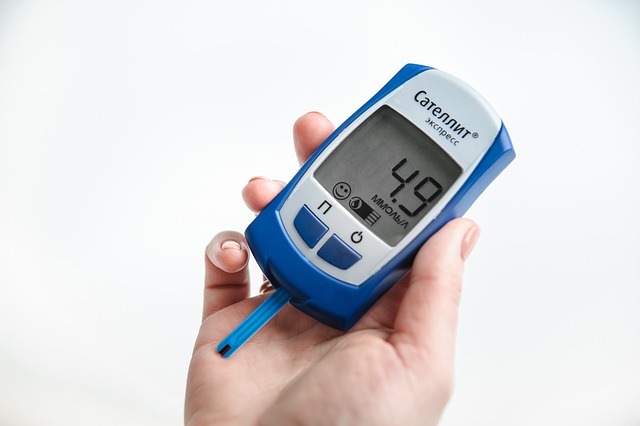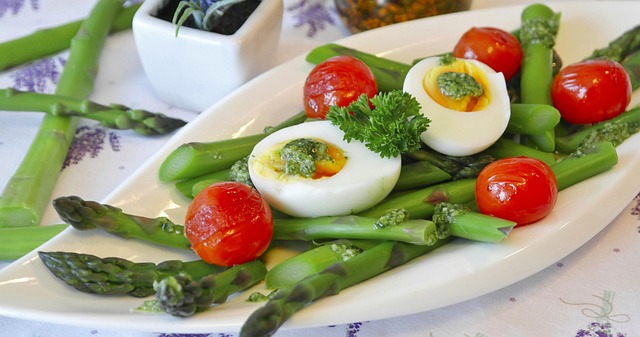The Best Foods To Prevent Diabetes Don’t Have To Taste Bad!
You have a choice if you know that you have prediabetes or high risk for diabetes. The first option is to do nothing and almost certainly develop diabetes within years. The other option is to do something, and dramatically lower your risk for diabetes. The second choice makes the most sense because prediabetes treatment with healthy eating and other lifestyle choices is so effective at preventing or delaying type 2 diabetes.
Including healthy foods regularly instead of less healthy ones can help with blood sugar and provide a wealth of other health benefits, such as more energy, a healthier heart, and lower blood pressure. The following foods may help prevent type 2 diabetes.
Almost every choice you make day and night can affect blood sugar levels, and Lark Diabetes Prevention Program can guide you in healthy decisions. This personalized coaching program uses proven methods to lower risk for type 2 diabetes. See if you are eligible below.
1. Whole Grains

Whole grains may be high in carbohydrates, but research published in European Journal of Epidemiology and other studies have found that high whole grain consumption is linked to lower risk of developing diabetes. [1] Their benefits may be related to their fiber and antioxidants. You do not need to add a ton of carbohydrates to your diet to add whole grains. In most cases, you can substitute whole grains for refined carbohydrates that you are already having. Harvard Medical School has many suggestions for swapping whole grains for refined.
Here is a list of healthy foods to eat to prevent diabetes:
2. Broccoli

Eating more vegetables of any type can lower risk for type 2 diabetes, and broccoli is among the healthiest. It and other cruciferous vegetables, such as brussels sprouts, cabbage, and cauliflower, have fiber, vitamins A and C, and potassium, according to Linus Pauling Institute. Some people find that they have a bitter taste, but you can try cooking them longer to reduce that taste.
3. Spinach

The more vegetables, the better for preventing diabetes, and green leafy vegetables such as spinach, kale, arugula, and lettuce are excellent choices. They are not only sources of fiber, calcium, and vitamin A, but also are low enough in calories to help with weight loss. You can eat kale and spinach raw or cooked and still expect a wealth of benefits. Iceberg lettuce is lower in most nutrients, but romaine, radicchio, endive, and spring mix are all nutrient-rich.
4. Blueberries

Blueberries regularly appear on various “Superfoods Lists,” and that trend continues with this list. Research has found a lower risk of diabetes in people who eat more blueberries. Grapes, apples, pears, peaches, plums, and apricots were also linked to lower risk in research published in British Medical Journal. [2] Nutrients in these fruit include fiber, vitamins A and C, potassium, and countless antioxidants that together may protect against heart disease and Alzheimer’s along with diabetes. Choose fresh or unsweetened frozen fruit, since high fruit juice consumption may actually increase diabetes risk. Read more about which foods can spike your blood sugar and your glycemic index.
5. Grapefruit

Grapefruits and oranges are both linked to lower risk for diabetes,[3] as are citrus fruits as a group.[4] These fruits include tangerines, mandarins, clementines, lemons, and limes. They are known for their vitamin C content, and they also have flavonoids and soluble fiber, which is the type that lower cholesterol. Citrus fruits are lower-glycemic than many types of fruit, so they do not cause such a spike in blood sugar levels. Ask your doctor before eating grapefruits if you are on any medications because a compound in grapefruits can interact with certain cholesterol, blood pressure, allergy, and other medications.
6. Plain Yogurt

Dairy products fall out of favor occasionally in the media, but the evidence generally supports the benefits of yogurt, including for preventing diabetes, according to The American Journal of Clinical Nutrition.[5] Yogurt is rich in calcium and high-quality protein, and though it contains sugar, the only kind of sugar in plain yogurt is natural. Yogurt with active cultures also contains probiotics, which support a healthy balance of bacteria in your gut. If you have been avoiding dairy products because of lactose intolerance, you may be surprised to discover that some people can handle a bit of yogurt. Try Greek yogurt to start since it has less lactose. Choose plain rather than flavored yogurt to avoid added sugars or artificial sweeteners, and look for nonfat yogurt to keep calories down.
7. Water

Water is not technically a food, but it is a nutrient. More important is that researchers have found a high amount of evidence linking it to lower diabetes risk.[6] Water naturally increases energy and since it is calorie-free, drinking water instead of caloric beverages such as juice may help with weight control. You may get double benefits if you choose water instead of sugar-sweetened beverages, such as soda, sports drinks, and sweetened coffee drinks, since these are independently linked to higher diabetes risk.
8. Garbanzo Beans

Garbanzo and other beans, lentils, soybeans, and split peas have nutrients that can improve cholesterol profiles and lower blood pressure. Rich in fiber, protein, and more, these legumes can have the added benefit of substituting for fatty and processed meats, which are foods that raise diabetes risk. The uses for legumes are nearly limitless.
9. Carrots

Consumption of dark yellow vegetables are linked to lower risk for diabetes.[7] These include carrots, winter squash such as butternut and acorn squash, sweet potatoes, and pumpkin. While it may be surprising that these higher-carb vegetables make the list, their impressive fiber, potassium, and vitamin A content helps explain it. Furthermore, you can often use these vegetables instead of potatoes, which are separately linked to higher diabetes risk.
10. Avocados

These creamy fruits are high in fat, high in calories, and oh, so healthy. In one study, people who ate avocados regularly not only had a healthier overall diet, but also lower body weight and 50% lower risk for high blood sugar and other symptoms that make up so-called metabolic syndrome.[8] Avocados are rich in heart-healthy monounsaturated fats and fiber, along with antioxidants. Nuts and peanuts are similarly high in fat and provide some fiber, and also may improve weight and certain aspects of metabolic syndrome. Just stick to a small serving size of ¼ cup for avocados and 1 ounce for nuts and peanuts.
More Avocados, Nuts, and Peanuts for a Healthier Lifestyle
- Use pureed avocado instead of mayo as a spread for sandwiches or in egg salad.
- Dip carrots and apples into peanut butter.
- Mix nuts into cereal or oatmeal.
- Serve avocados over eggs or with chicken.
- Dip avocado strips into crushed almonds and bake them for a snack.
- Make a snack mix with nuts or peanuts, dark chocolate, whole grain cereal, and grapes.











.webp)






